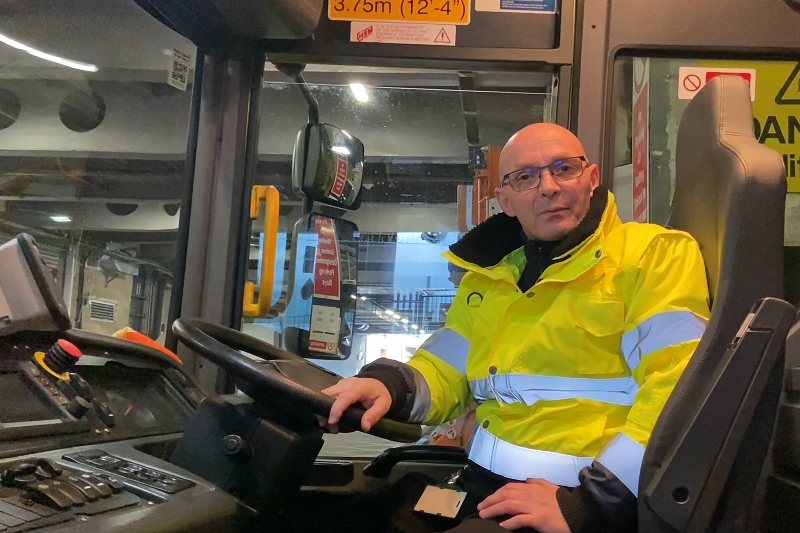LAPV caught up with Neil Spence, supervisor and driver for Islington Council, and Refuse Vehicle Solutions (RVS) managing director Spencer Law to learn more about RCV conversions.


Refuse Vehicle Solutions (RVS) is taking the world of electric vehicles by storm. Neil Spence, supervisor and HGV driver for Islington Council, has been working with their Dennis Twin Pack electric conversion for the last three months. Mr Spence shared his thoughts on his driving experience.
Neil, please tell us a bit about yourself.
I have been working at Islington council since 1997. I was recently promoted to supervisor, and it's an exciting time to be part of the fantastic work that everyone is doing here.
What are your thoughts on diesel versus the RVS converted Twin Pack?
With diesel vehicles, you get a lot of rumbling noise under the seat, which you don't get with electricity. The electric vehicle allows you to work longer and more patiently as you are not constantly worried about the noise.
Diesel-powered RCVs are quite smelly; it comes with diesel fumes, and it can kick up a lot of dust if you're standing outside when the engine is running.
Driving this electric vehicle is quieter not just for us but also for the residents when we're working at early hours in the morning – from 5am right up till midnight, basically 24 hour service, seven days per week. The back of the vehicle is quieter on the ancillary part of the equipment.
There's a lot of range anxiety with electric RCVs. How is your experience with it so far?
The range is excellent! We can get two shifts with one charge, which is about 15 hours of work. It's only a 6-mile radius borough, though. We cover about 9.5 miles on an average day with 300 bins per shift. After a full shift, the battery is around 50%.
In the cold season, we use air-con, which is great! There are also no changes in the instrument cluster, which makes things easier for me.
Have you driven other electric vehicles? If yes, how does it compare?
The difference between this vehicle as a conversion and our other new electric RCV – it's massive.
I think the RVS repowered vehicle is just as good to drive, probably better. The condition of this vehicle, how it drives and how it works is fantastic. RVS is doing a fantastic job.
Islington Council has exciting plans to develop its zero-emissions strategies in the next couple of years and where possible the council will look to convert or repower existing older diesel vehicles rather than buying brand new, which I fully support.
How quickly does it charge?
With supercharging 90kwh, in 1.5 hours it gets to about 80%, which is excellent.
With no oil, no filters to change, and considering it doesn't need servicing anywhere near as much, what's not to like?
LAPV also talked to RVS managing director, Spencer Law, to learn more about their work. Mr Law started by explaining that, ‘We are always looking at the bigger picture when it comes to decarbonisation. For a successful transition, we only considered technologies that will allow us to provide a reliable, cost-effective and scalable solution.’
Tell us more about the refurb and repower process?
RVS takes an existent vehicle and refurbishes it to work as good as new, while also repowering to zero noise and emissions. It sounds simple enough, but it takes an expert team to pull this off! RVS engineers will take everything apart and assess every nut and bolt. They will then design a scope of works with the most cost-effective option for the customer using the EMOSS technology. There is a magnitude of separate tasks for just one project that needs precision and engineering experience to complete.
How is RVS overcoming the drawbacks of electric vehicles for waste management?
There are many benefits to the EMOSS technology, besides avoiding the cobalt supply chain. A considerable factor making these batteries stand out is the long-life cycle. They offer minimal degradation over 10 years and have high thermal stability. Furthermore, the EMOSS batteries are based on a modular system which means that single modules can be replaced if they do degrade slightly, rather than replacing the entire battery, which is more cost-effective and better for the environment.
This interview was originally published in the winter issue of LAPV. For a free subscription sign up here.